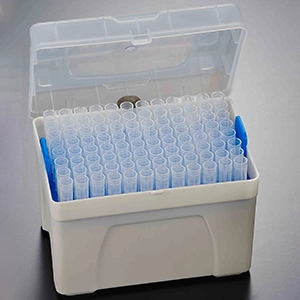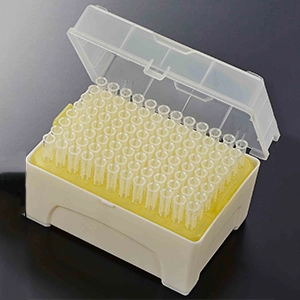PIPETTE TIPS
EarthOx’s pipette tips are manufactured from super clear high quality polypropylene. The surfaces of the tips are produced through a special process. This process makes the tip inner surface become super hydrophobic, thus significantly reduces sample loss and provides substantially higher reproducibility when working with critical media.
*Sterile
*Available with 5 transfer volumes of 10μl, 20μl, 100μl, 200μl and 1000μl
*Free of Nucleic Acids, Pyrogens/Endotoxins, PCR Inhibitors and Trace Metals
*Ideal for biological samples that contain detergents such as SDS, Tween
*Tips with or without PP filter
*Preferred accessories for most brand micropipettor
*Compatible with Eppendorf, Gilson and Biohit
*Fully autoclavable to 121℃
*Non-Pyrogenic & DNase/RNase-free
Click here to skip the explanation and take me to EarthOx Pipettes Tips!
(Scroll to the bottom of the page to see our pipette tips selection.)
What You Should Know About Pipette Tips
When it comes to medicine, biology, chemistry, and many other fields, precision and accuracy is a requisite. Laboratories have come to rely on a piece of equipment called a pipette to achieve that goal. The tool is used to convey liquid measures from one point to another in a precise manner. Many researchers use a disposable tip that comes in various styles and is made of different types of materials which influences exactitude.
Background
When scientists like Louis Pasteur began experimenting, they realized that the use of a pipette was needed but the tool had yet to be invented. As a result, the use of tubes that could be pinched to trap liquids were used. Pasteur began with what resembles today’s eyedropper and he eventually discovered that glass allowed more control. In 1957 a German by the name of Dr. Schnitger patented the first micropipette. The pipette patent was inherited in 1961 by Dr. Netheler who created Eppendorf, a company that specialized in the production of the tool on a commercial level. Shortly thereafter, several scientists got together to improve the design and eventually created the adjustable pipette with a detachable tip.
Types of Pipettes That Use Tips
Pipettes originally did not use tips. As type and uses changed, however, tips were added to improve precision and accuracy while reducing cross-contamination.
One of the most common micropipettes that uses tips is the air displacement model. The pipette measures volumes of liquid that range between 0.1µl and 1000µl. In order to reduce the chance of contamination, the tips used with the instrument are disposable since they come into contact with the liquid utilized during a study and/or analysis. The tips come in colors that correspond to the amount of liquid measured.
White – is used with a P10 pipette which measures 0.5µl-10µl
Yellow – is used with a P20 measuring 2µl-20µl and P200 that measures 20µl-200µl
Blue – is used with the P1000 measuring 200µl-1000µl
The air displacement pipette works on a vacuum system. As the piston moves up liquid is drawn through the tip and fills the space in the apparatus made by the vacuum.
Positive displacement pipettes are used with viscous or volatile substances when only small amounts of liquid are required for analysis. Unlike the air dispense models, microsyringe plastic sterile pipette tips are used that displace liquids directly where desired. The system is best used when contamination needs to be minimized such as with DNA sampling.
Types of Pipette Tips
When seeking to achieve reliability and accuracy, use of the right pipette tip for the right job is essential. They are used with micropipettes for the uptake and dispensing of liquids. The narrow tube generates a vacuum over the chamber holding the liquid then draws a sample and dispenses it. They are made of polypropylene and are clear to enhance visibility of contents. The tips themselves are disposable and made of an injection molded plastic.
When sterility is necessary, sterile pipette tips that are pre-packaged, with the importance of eliminating cross-contamination in mind, are used. An example would be when studying cell cultures.
An alternative to the previous tip when contamination prevention is necessary, filtered tips are best as they are aerosol resistant. An example would be for forensic science and clinical diagnostics.
When sterility is not necessary, non-sterilized tips are used. The classroom often uses this type since practicing technique and procedure are the goal rather than replication.
Low retention pipette tips were designed to reduce the loss of samples. These pipette tips are ideal when high precision measurements are required and replicating results is desired. They are used with air displacement pipettes. They are slightly different in that all the liquid in the tip is part of the measured volume. Low retention pipette tips reduce residue from adhering to the inner wall of the tip and maximizes the amount of liquid dispensed.
Barrier/filter tips contain a liquid obstruction that helps prevent contamination. The tips are used as a preventative measure since cross-contamination can occur with even the slightest technical error.
Uses of Pipette Tips
Tips are used with micropipettes in a variety of settings. The uses of pipetting are extensive. For example, laboratories and research/diagnostic centers use tips to dispense liquids into a well for PCR assays. Microbiology laboratories, on the other hand, use them when testing industrial products and dispensing tested products such as caulk and paint. Even school science labs need them when teaching future scientists best practices in experimentation.
Three of the Most Important Things To Know
Regardless of how long an individual has worked in a field where pipetting is done on a daily basis, reviewing some basic rules will ensure skills are honed when it is time to conduct research. Here are the three most important things to remember when pipetting.
To reduce the chance of errors and achieve accurate results, be sure to remember to use trial and error when fitting the pipetting tip into place. Tips should fit easily into place, not require force when attaching the tip to the apparatus, and will remain in place.
If the tip is difficult to install, if the colors don’t match, or if liquid leaks when in use, it is most likely the wrong size or type of tip.
If an air tight seal is required, a sealing ring that fits on the pipette nozzle can be added. The use of rings will reduce errors, increase accuracy, and minimize leaks during testing.
Showing 1–9 of 25 resultsSorted by popularity
-
Sterile Pipette Tips with Filter
Pipette Tips 1000 ul w/ Filter -Non Sterile – Low Retention (96 tips/rack x 20 racks)
Original price was: $294.00.$79.00Current price is: $79.00. -
Sterile Pipette Tips
Pipette Tips 200 ul (96 tips/rack x 20 racks) (1920 tips)
Original price was: $110.00.$99.00Current price is: $99.00. -
Sterile Pipette Tips
Pipette Tips 1000 ul (96 tips per rack x 20 racks)
Original price was: $147.00.$119.00Current price is: $119.00. -
Sterile Pipette Tips with Filter
Pipette Tips 10 ul with Filter -Super Low Retention -Non-sterile (96 tips/rack x 20 racks)
Original price was: $151.00.$39.00Current price is: $39.00. -
Sale!
 Out of stock
Sterile Pipette Tips
Out of stock
Sterile Pipette TipsPipette Tips 10 ul Super Low Retention (96 tips/rack x 20 racks)
Original price was: $96.00.$89.00Current price is: $89.00. -
Sterile Pipette Tips with Filter
Pipette Tips 200 ul with Filter – Non Sterile – Low Retention (96 tips/rack x 20 racks)
Original price was: $183.00.$49.00Current price is: $49.00. -
Sterile Pipette Tips with Filter
Pipette Tips 100 ul w/ Filter – Low Retention -Non Sterile (96 tips/rack x 20 racks)
Original price was: $166.00.$49.00Current price is: $49.00. -
Sterile Pipette Tips
Pipette Tips 10 ul – Sterile (10,000 tips per case)
Original price was: $160.00.$129.00Current price is: $129.00. -
Sterile Pipette Tips with Filter
Pipette Tips 20 ul with Filter – Non Sterile- Low Retention (96 tips/rack x 20 racks)
Original price was: $167.00.$49.00Current price is: $49.00.



